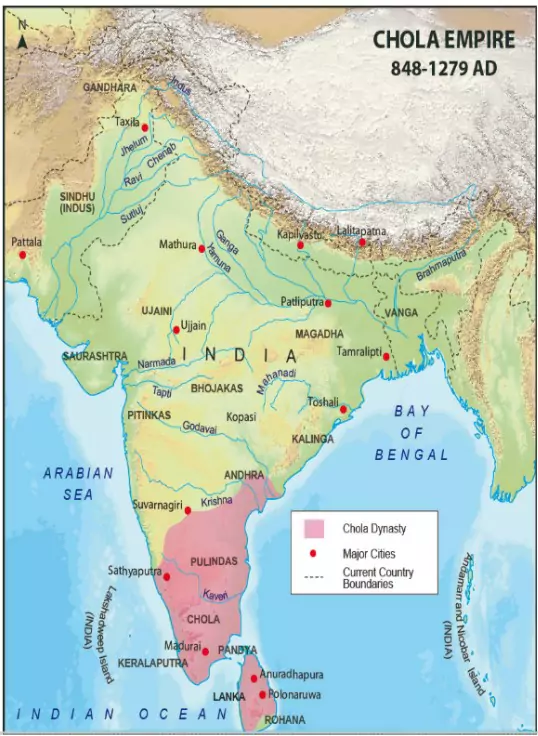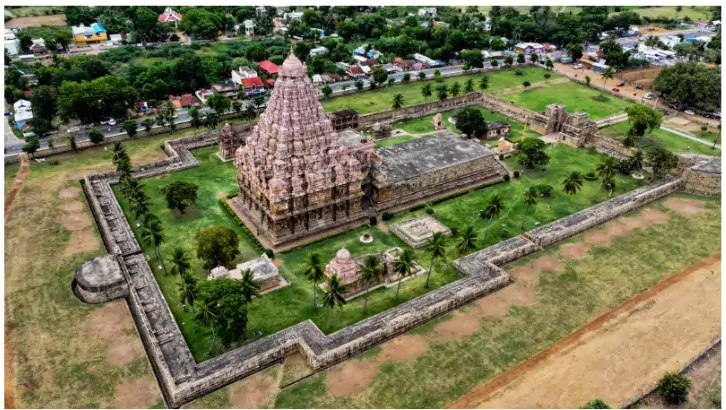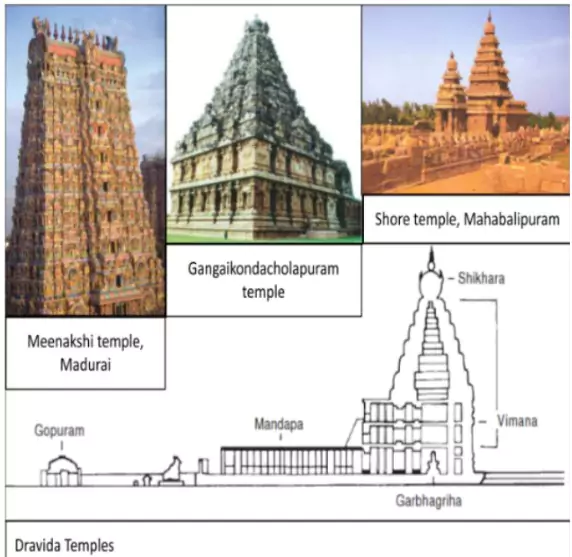PM Modi is expected to participate in a function organised to commemorate the 1000th anniversary (millenary) of the conquest of the Gangetic plains by King Rajendra Chola 1.
- As a mark of his success, he brought sacred Ganga water to Tamil Nadu, founded the city of Gangaikonda Cholapuram, and constructed the monumental Gangaikonda Cholisvaram Shiva temple—now a symbol of Chola grandeur.
About Rajendra Chola 1

- Son of Rajaraja 1, Rajendra I took the Chola Empire to its peak in military expansion and prestige.
- Military Expansion in the Deccan:
- He launched a campaign against the Western Chalukyas, pushing Chola influence up to the Tungabhadra River.
- Defeated the Pandyas in Madurai, prompting them to flee to Sri Lanka, which he subsequently invaded.
- The Northern Expedition and Its Impact
- Rajendra Chola 1 (regnal years: 1012–1044 CE) undertook a military expedition to North India, defeating the Pala king Mahipala of Bengal, the Kalinga ruler, and other northern chieftains.
- His victory over these kings is well documented in the Tiruvalangadu, Esalam, Karanthai, Tirukkalar Copper Plates and various inscriptions, and Tamil literary works.
- Tradition states that vanquished kings were made to carry Ganga water on their heads to the new Chola capital. This water was poured into the lake “Chola Gangam” (now Ponneri).
- Rajendra Chola 1 brought back Chalukya and Kalinga sculptures as trophies.
- Naval and Maritime Achievements:
- Led a successful naval expedition against the Sri Vijaya kingdom (in present-day Sumatra), asserting dominance over Southeast Asian maritime routes.
- His maritime victories boosted trade with the Malay Peninsula and other parts of Southeast Asia.
- Titles:
- Mudikonda Cholan (the Crowned Chola)
- Kadaramkondan (Conqueror of Kadaram, i.e., Kedah in Malaysia)
- Pandita Cholan (the Learned Chola)
Gangaikonda Cholapuram
- Background: Following his northern triumph, Rajendra Chola 1 assumed the title ‘Gangaikonda Cholan’ (“the Chola who conquered the Ganga”).
- Establishment of the Capital: He founded Gangaikonda Cholapuram in present-day Ariyalur district, Tamil Nadu, around 1025 CE. The city became the imperial capital of the Cholas until 1279 CE.
- Architectural Significance:He constructed the grand Gangaikondacholeeswaram Temple, dedicated to Lord Shiva, mirroring the style of the Brihadeeswarar Temple at Thanjavur.
- Urban Planning: Gangaikonda Cholapuram was a planned urban centre with forts, palaces, and streets.
- Inscriptions from Kulottunga I’s reign (49th year – 1119 AD) mention multiple royal buildings.
- Cultural and Political Importance: The city functioned as a major political, commercial, and cultural hub under the Cholas.
- It symbolised Chola dominance from the Tungabhadra in the north to Sri Lanka in the south.
- The city was known by various names in literature:
- Muvar Ula by Ottakuttar – citadel description.
- Rajaraja Cholan Ula – lists city landmarks.
- Kalingattuparani – refers to the city as Gangapuri.
Gangaikondacholeeswaram Temple
- Commissioned by: Rajendra Chola 1 (r. 1014–1044 CE), the son of Rajaraja Chola I.
 Principal Deity: The temple is dedicated to Lord Shiva, worshipped in the form of a 13-foot tall Shiva Lingam housed in the sanctum.
Principal Deity: The temple is dedicated to Lord Shiva, worshipped in the form of a 13-foot tall Shiva Lingam housed in the sanctum. - It is one of the “Great Living Chola Temples”, along with Brihadeeswarar Temple (Thanjavur) and Airavatesvara Temple (Darasuram), inscribed as UNESCO World Heritage Sites for their exceptional architecture and cultural significance.
- Temple Structure:
- The vimana (main tower) rises to a height of 55 metres, built on an elevated platform.
- The courtyard stretches 170 m in length and 98 m in width, with intricate sculptures and carvings throughout.
- The temple is adorned with exquisite stone carvings, showcasing the artistic and engineering prowess of the Chola period.
- A symbol of imperial Chola power and devotion, the temple reflects the peak of Dravidian temple architecture and the Chola dynasty’s commitment to temple building.
- Despite its grandeur, no inscription by Rajendra Chola I has been found in the temple.
- Knowledge of his role comes from his son Vira Rajendra’s inscriptions, referring to the palace as Chola-Keralan Thirumaaligai.
Dravidian Style of Temple Architecture

The Dravidian style evolved and flourished primarily in South India from the 8th century to the 13th–14th century CE under the patronage of dynasties like the Pallavas, Cholas, Pandyas, and Vijayanagar rulers.
Key Architectural Features
- Enclosure: Temples are surrounded by high boundary walls, demarcating sacred space from the secular world.
- Example: The Sriranganathar Temple at Srirangam (Tiruchirappalli) has seven concentric rectangular walls with gopurams at each level, and the sanctum at the center.
- Gopuram: The monumental entrance gateway, known as gopuram, is built into the front wall and became the most prominent architectural element over time.
- Vimana (Main Tower): The vimana is a stepped, pyramidal structure built over the sanctum (garbhagriha), unlike the curvilinear shikhara of Nagara style.
- Panchayatan Layout: Temple complexes often follow the panchayatan style, consisting of a central shrine surrounded by four subsidiary shrines at the corners.
- Temple Tank: Presence of a water tank or temple pond inside the enclosure is a distinctive feature, used for ritual purification.
- Temple Towns: Famous centres of Dravidian temple architecture include Kanchipuram, Thanjavur (Tanjore), Madurai, and Kumbakonam.
![]() 21 Jul 2025
21 Jul 2025


 Principal Deity: The temple is dedicated to Lord Shiva, worshipped in the form of a 13-foot tall Shiva Lingam housed in the sanctum.
Principal Deity: The temple is dedicated to Lord Shiva, worshipped in the form of a 13-foot tall Shiva Lingam housed in the sanctum. 
